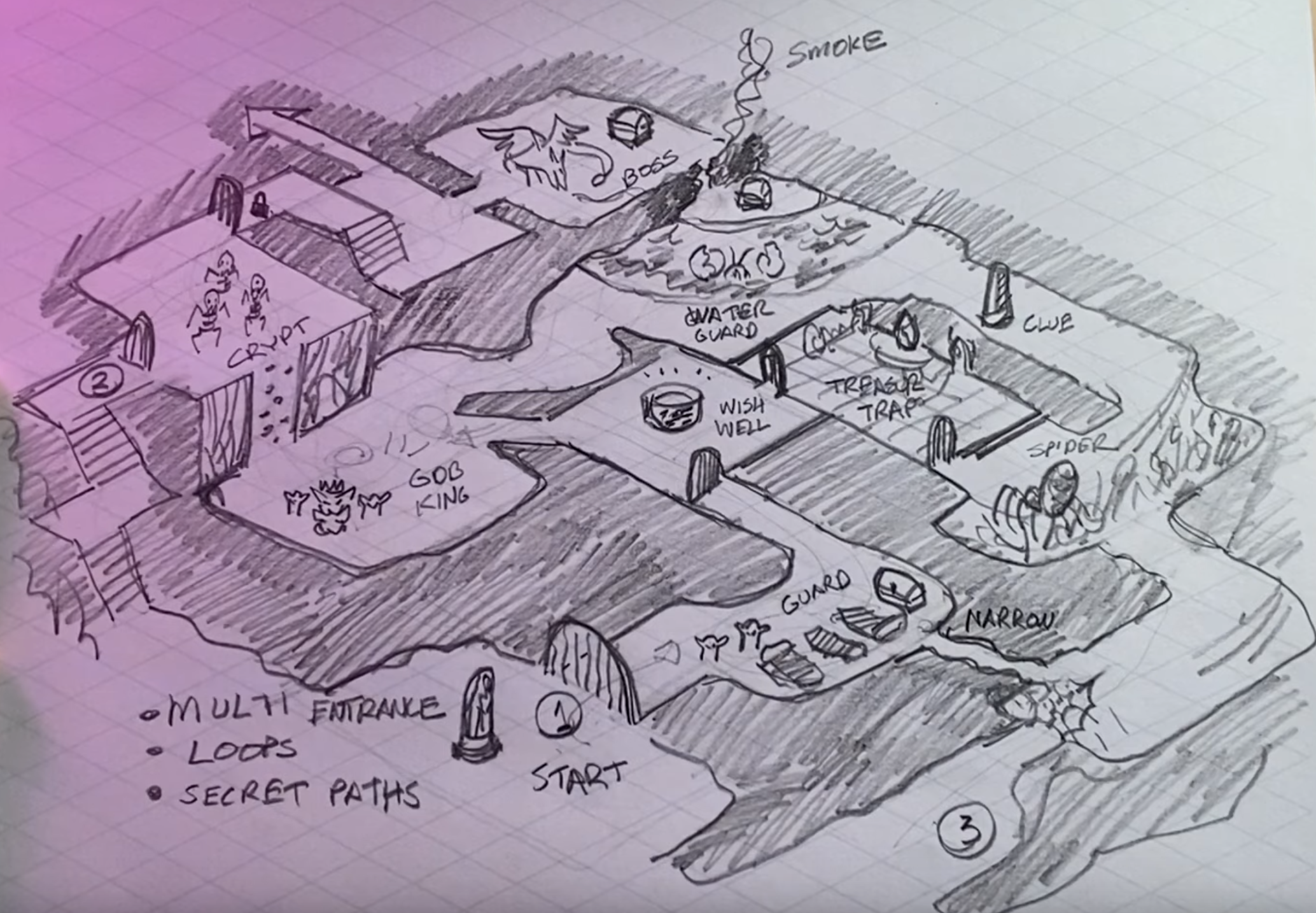Multiple Entries

Image source: This video by Map Crow
★
How you enter a given encounter has a huge impact on the possibilities for how that encounter could play out. Multiple entries increase the possibility space for situations and make them less predictable for both the GM and the players.
As noted in 🌱 Meaningful Choice, the goal in designing an adventure is often to maximize the number of meaningful decisions players make during play—where “meaningful” means that choosing one option over another leads to recognizably different outcomes.
When players engage with an encounter, the first choice they often face is how to enter it. This decision can lock or unlock certain options later in the sequence of events, magnifying its impact on the shape of the encounter. Providing multiple, distinct ways to enter a space gives players an immediate sense of agency and creates more varied play outcomes.
When applied to dungeons, this was part of the design philosophy of the late Jennell Jaquays. When applied to any kind of encounter, it is reminiscent of what Justin Alexander calls the Three Clue Rule.
Therefore:
Provide multiple entries to rooms, situations, and encounters. Make them recognizably different from each other, with each path locking and unlocking certain follow-up options depending on which the players choose.